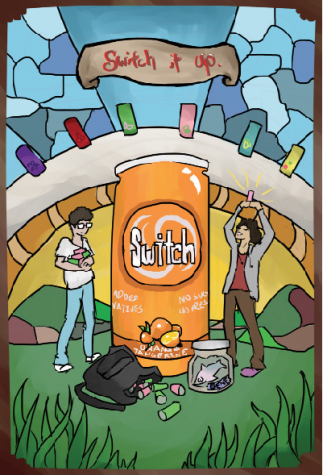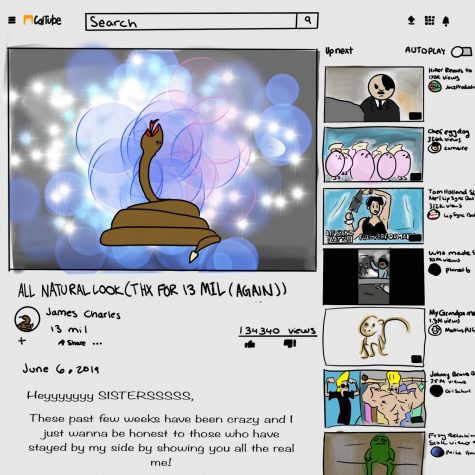Quakes shake San Ramon
Swarm of almost 600 earthquakes have residents preparing for a big earthquake
Stop, drop, and roll! Turn off your lights and hide in a corner! It’s an earthquake!
Hopefully, all Californians know that’s not what you do in an earthquake. It’s especially important now for San Ramon residents to know the proper earthquake drills and secure earthquake emergency packs because the city has experienced a swarm of small earthquakes over the past two months.
Starting in early October, San Ramon has been experiencing a swarm of small earthquakes that’s reached an astonishing number of more than 550, the biggest clocking in at a magnitude of 3.6, according to Caltech University’s Earthquake Database.
While seismographs have recorded almost 600 earthquakes in the San Ramon area, little to no damage has been reported. Nevertheless, it still raises some concern for the possibility of a bigger earthquake, even if seismologist Dr. Jennifer Strauss from the UC Berkeley Seismological Laboratory denies this theory.
“Earthquake swarms often happen without being followed by a larger earthquake,” Strauss said. “It does not indicate that a large rupture is on its way.
“That being said, the general hazard for the San Ramon area is about 8 percent, so a moderate sized earthquake can certainly happen with or without a swarm,” she continued.
The potential of a moderate to large earthquake is not unnoticed on campus. ‘The Great Shakeout’, California’s statewide earthquake drill, was performed in October in preparation for an earthquake.
Wary of the threat of a bigger earthquake, parents are becoming more on edge and concerned.
“I’ve never felt anything like this,” Katie Aguiar, whose two daughters goes to Cal High. “I told my family we better secure our earthquake emergency packs. I just made a new one a few weeks ago. People keep telling me this probably isn’t a sign a big one is coming, but I still can’t help but worry for one.”
Cal students are feeling some of these earthquakes. But since there is only a small concern for a bigger earthquake, most students’ daily lives aren’t affected.
“I’ve been pretty much feeling earthquakes at least three to five times a week,” junior Dillon Johnson said. “I did begin to worry that a bigger one would hit very soon, but so far nothing terrible has appeared. It’s not something I really stress over.”
Almost everybody has heard of the impending large earthquake California is ‘overdue’ for, so there seems to be a first-response concern that stems from that knowledge. Still, the concern doesn’t extend further than expressing the worry to friends.
“I am kind of scared for a bigger earthquake,” said freshman Jessica Chen. “But it seems like they aren’t going to get bigger. I’m not a seismologist, so I don’t really know, but I do tend to even forget about [the earthquakes] sometimes.”
But a handful of Cal students claim to have only felt little to none of San Ramon’s swarm, so their concerns are almost non-existent.
“Yeah, I’m not really feeling [the earthquakes]. I spend most of my time in Dublin, and I’m a heavy sleeper,” junior Megan Weinshelbaum said. “I am kind of hoping there isn’t a bigger one? But I’m pretty unconcerned. I probably have an emergency pack somewhere?”
It’s true many of these earthquakes occur during the night or very early morning, so it’s possible many Cal students aren’t worried because they sleep through them.
“No, I have not been feeling these earthquakes very much, and no, I’m not concerned for a bigger earthquake,” said senior Kyle Hendra. “I don’t even have an emergency earthquake kit.”
It’s common knowledge that it’s important to have an emergency earthquake pack in California.
The California Department of Public Health says it is important to have one gallon per person per day for at least three days in an emergency kit, as well as a three-day non-perishable food supply.
While the number of these earthquakes are high, with more than 400 since Nov. 2 – a figure that has topped both the previous San Ramon and Alamo city records of more than 400 earthquakes in 30 days – the swarm isn’t alarming nor unique.
“These numbers are not particularly astonishing,” Strauss continued. “Only about 15 of the over 400 earthquakes were near a magnitude of 3.0. These numbers are particularly high because our technology is much better than previous years. Technology wasn’t as sensitive, so not as many were recorded as now. Most of these earthquakes can only be felt by our instruments.”
The most common theory Cal students have is that these earthquakes are releasing tension, so a big earthquake won’t be so big. This lack of concern is misplaced, however.
“These earthquakes are releasing tension,” Strauss agreed. “But very, very, very little. It would take 32 magnitude 2.0 earthquakes to equal the energy of a 3.0 earthquake, and 32,000 magnitude 3.0 earthquakes to equal the energy release of a 6.0 earthquake.
“These earthquakes are doing very little to ease off a big one,” she continued. “We’re also forgetting about other faults, like the Hayward fault. If the Hayward fault had a large rupture, it could affect the Calaveras fault, as well.
“We live in an earthquake country,” Strauss stressed. “The possibility of an earthquake is always present, so preparedness is always important.”








